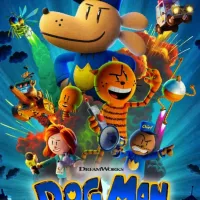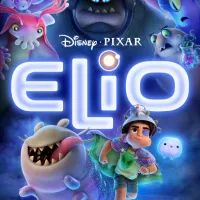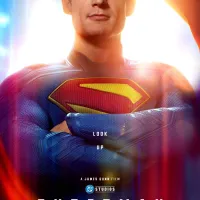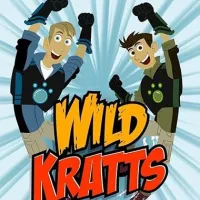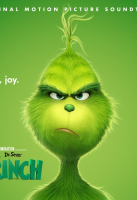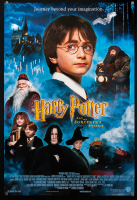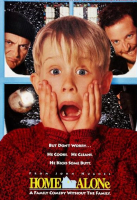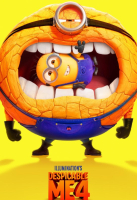
Despicable Me 4
Despicable Me 4
The anticipation around Despicable Me 4 was palpable in our household. Having devoured each of the previous movies in the franchise and both Minions spin-offs, we were eager to see if the new film lived up to our expectations. Illumination Entertainment has mastered the blend of humor and heart in the past, delivering stories that resonate with both parents and kids alike. Would the fourth installment continue this tradition, or would it falter under the weight of its predecessors?
My decision to take the whole family to see "Despicable Me 4" was influenced by the whimsical nostalgia associated with the franchise. From the witty antics of Gru, excellently voiced by Steve Carell, to the endearing yet chaotic nature of the Minions, we had high hopes. With tickets in hand and popcorn at the ready, we settled in for what we hoped would be a charming return to this beloved universe.
The History of the Franchise
Stepping back to appreciate the history of the Despicable Me franchise is essential. Launched in 2010, the original movie introduced us to Gru, a supervillain with a heart of gold, and his three adopted daughters. The combination of zany humor, heartwarming moments, and impressive animation made it a hit. Sequels and spin-offs followed, each expanding on the lore and deepening our affection for the characters.
The success of the franchise is no fluke. Illumination Entertainment crafted a unique blend of villainy, comedy, and redemption that appeals to a broad audience. It's why new installments are met with both excitement and high expectations. As such, "Despicable Me 4" had quite the legacy to uphold.
The Animation Quality
The first things that struck me about "Despicable Me 4" was the animation quality. Illumination has always delivered vibrant, colorful visuals, and this movie was no exception. The characters were more expressive than ever, thanks to advancements in animation technology. Small details, like the fabric of Gru's scarf or the textures of the Minions' overalls, added a layer of realism that made the film a visual delight.
However, while the aesthetics were impressive, I found myself longing for tighter storytelling. The animation, no matter how stunning, sometimes felt like a glossy veneer covering a less cohesive narrative. There were moments when the animation dazzled yet couldn't quite distract from the shortcomings in the plot.
The Storyline
The storyline in "Despicable Me 4" was a mixed bag. On one hand, it was packed with subplots and character arcs that kept the pace lively. On the other, this multitude of threads often felt disjointed. Gru's struggle to balance his roles as a father and a former villain was touching, but it competed with many other plot elements that detracted from its emotional impact.
Moreover, the introduction of new characters and the expansion of older ones sometimes felt forced. While new faces can invigorate a franchise, they should enhance the core narrative rather than dilute it. Unfortunately, in this installment, the overabundance of stories sometimes left the film feeling scattered and unfocused.
The Humor
The slapstick antics of the Minions, combined with Gru's deadpan delivery, elicited plenty of laughs from the audience. My children were especially thrilled with the physical comedy, while some of the more sophisticated jokes went over their heads.
However, not all the humor was equally palatable. Some jokes veered into questionable territory, making me wince and hope that my kids wouldn't choose those moments to emulate. While the humor was largely harmless, it occasionally ventured into areas that felt less appropriate for younger viewers.
Character Development
Character development in "Despicable Me 4" was a double-edged sword. Gru continued to evolve, showcasing his deepening dedication to his family. His transformation from a villain seeking redemption to a father striving for balance remained compelling. Yet, this development was often overshadowed by the numerous other arcs vying for attention.
The Minions, ever chaotic and lovable, remained largely static in their roles. While their antics were amusing, there was little growth or change in their characters. This stasis, while entertaining, contributed to the feeling that parts of the film were treading water rather than moving forward.
Voice Acting
The voice acting in the movie was stellar, as expected. Steve Carell's portrayal of Gru was both humorous and heartfelt, infusing the character with a sincerity that made his dilemmas relatable. Kristin Wiig returned as Lucy, bringing an energy and warmth that balanced Gru's more somber tones.
New additions, like Will Ferrell as the antagonist Maxime Le Mal, added fresh dynamics to the film. Ferrell's comedic timing and delivery infused the character with a blend of menace and absurdity that made him a memorable addition. Yet, despite the strong performances, the fragmented story sometimes failed to give these talents the platform they deserved.
Music and Soundtrack
The music and soundtrack of "Despicable Me 4" played a significant role in setting the tone. The score, peppered with upbeat and catchy tunes, kept the energy high. Familiar themes from previous movies were woven in, providing a sense of continuity that long-time fans would appreciate.
However, while the soundtrack was enjoyable, it occasionally felt like a crutch to compensate for the film's narrative shortcomings. The music often did the heavy lifting in maintaining engagement, which, while effective, underscored the story's weaknesses.
Audience Reaction
Watching the movie in a packed theater, it was clear that "Despicable Me 4" struck a chord with its target audience. Children laughed uproariously at the Minions' antics, while parents chuckled at the more nuanced jokes. The energy in the room was infectious, mirroring the film's lively spirit.
However, my personal reaction was more tepid. While the humor and animation were effective in the moment, the movie's narrative flaws left me craving more substance. The enthusiastic audience response underscored a key point: while the film entertained, it didn't fully satisfy the deeper storytelling needs of older viewers.
Pacing and Editing
Pacing in "Despicable Me 4" was frenetic, to say the least. The film bounced from one subplot to the next with dizzying speed, leaving little room for reflection. This rapid pace kept the action moving but at the cost of narrative coherence and emotional depth.
The editing, while technically proficient, contributed to this sense of haste. Scenes transitioned abruptly, and some plotlines were resolved with a swiftness that felt unsatisfying. The film's brisk tempo, while engaging, often left me wishing for more breathing room to savor the story and characters.
Subplots and Side Characters
The multitude of subplots and side characters in "Despicable Me 4" was both a strength and a weakness. On one hand, these elements added variety and kept the film from becoming monotonous. On the other, they often felt underdeveloped and tangential to the main story.
Characters like Poppy Prescott, the teenage aspiring villain, had potential but were ultimately overshadowed by the sheer number of competing plotlines. While these side stories added color to the film, they sometimes distracted from the central narrative, contributing to the overall sense of fragmentation.
Comparison to Other Films
Comparing "Despicable Me 4" to other films in the franchise, it becomes clear that this installment struggled to maintain the delicate balance of humor and heart that defined its predecessors. While the first "Despicable Me" and even "Despicable Me 2" managed to weave compelling narratives with emotional depth, the fourth film often felt like a collection of loosely connected gags.
Moreover, when placed alongside recent animated features like "Inside Out 2," the difference in storytelling quality becomes stark. While both films entertain, "Inside Out 2" offers a more cohesive narrative and profound message, highlighting some of the narrative weaknesses in "Despicable Me 4."
Final Thoughts and Conclusion
In conclusion, "Despicable Me 4" presented a mixed viewing experience. While the animation and humor entertained in the moment, the fragmented narrative and lack of emotional depth left me yearning for more. The film succeeded in keeping my children engaged, but as an adult, I found myself wanting the tight storytelling and heartfelt moments that defined earlier installments.
Ultimately, "Despicable Me 4" is a fun, lighthearted watch that caters well to its younger audience. However, for those seeking the blend of humor and heart that made the franchise a favorite, it may fall short. As we left the theater, I couldn't shake the feeling that, while enjoyable, this installment didn't quite capture the magic that made the original films so special.
